This is a breast cancer article from icon magazine giving readers an overview of breast cancer prevention and treatments available, from 2014. We have, of course, updated it. It gives you a 30 point guide to some of the most important factors you need to consider if you want to beat breast cancer.
However, our equally important ’Overview on Breast cancer’ can be found here -
Go to: A Comprehensive overview on Breast Cancer
It includes sections on causes, complementary therapies, alternative therapies, TNBC, Her2 +ve etc. etc.
* * * * *
Breast cancer - 30 tips for prevention and treatment
At the CANCERactive Cancer Prevention Conference in 2004, one Professor stood up and spoke about how, once a woman had breast cancer in one breast, he had the tools to prevent the cancer returning in the other breast.
Is that prevention, or treatment? Whether or not you have had breast cancer, we thought you might like to know the following all of which comes from research articles we have covered in Cancer Watch over the recent years.

1. Genetic factors (like BRCA1 and BRCA 2 and PALB-2 mutations) do increase risk. However, less than 7 per cent of women carry these factors and you can be tested for them. If positive, extra preventative care is essential some reports suggest 25 per cent of diagnosed breast cancers are in people with these genetic faults. However, the latest research shows having a genetic makes no difference to your survival times -
Go to: Having a genetic mutation makes no difference to breast cancer survival
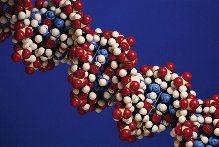
2. A significant change is occurring in the age of people diagnosed. Whilst cancer in general has predominantly been an old person’s disease with 80 per cent in the over 60 age group, the latest figures show almost 40 per cent of breast cancers are being diagnosed in younger women. Part of this seems linked to the increased use of antibiotics in the young destabilizing the gut microbiome; and to greatly increased levels of environmental toxins. Increases in average weight are also a factor.
3. Many women who develop breast cancer have significant vitamin and mineral deficiencies. US research has shown deficiencies of selenium and zinc increase risk, while 72 per cent of US women with breast cancer were shown to be vitamin C deficient and 78 per cent to be deficient in vitamin B-12. US research also showed that women with low blood levels of vitamin E were 500 times more likely to get the disease, the tocotrienol variants of vitamin E being far more preventative than the tocopherol variants. Guess which ones the EU has not permitted for High Street sale!?
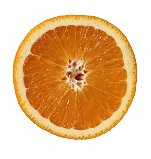
4. Like vitamin E, long-chain omega-3 has been shown to keep breast tissue less dense. Women with the highest blood levels of omega-3 have the lowest levels of breast cancer. Long-chain omega 3 is principally obtained from oily fish and taking fish oils. Some can convert from plant short-chain omega 3.
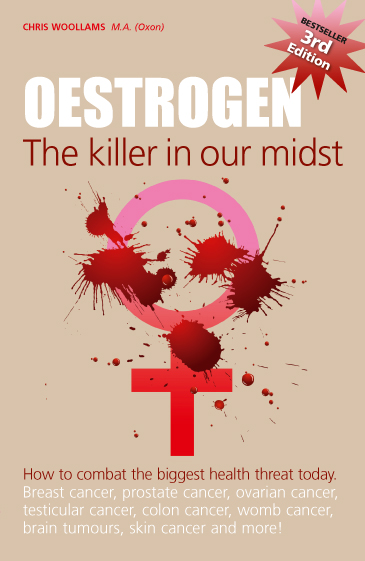 ’Did you know that this cancer can be driven by oestrogen. Find out how you can control your oestrogen levels, naturally’. CLICK HERE.
’Did you know that this cancer can be driven by oestrogen. Find out how you can control your oestrogen levels, naturally’. CLICK HERE.
5. Perhaps the most important vitamin is vitamin D. 82% of women on diagnosis with breast cancer have low vitamin D. Women with the lowest blood levels of vitamin D have more breast cancer, and survive less. Professor Hollick of Harvard has stated that there would be 25 per cent less fatalities from breast cancer if women took adequate levels of vitamin D. If you cannot go out in the sunshine for several hours a day, you should supplement; some US medical centres recommend 5,000 IUs a day. Without vitamin D your immune system doesn’t work fully.
Go to: Vitamin D supplementation increases breast cancer survival
6. Eating mass market red meat is linked with a threefold increased risk in breast cancer, possibly due to the animals own hormones, or the pesticides from the fields it grazed in. Research in icon concluded that red meat eating caused cellular inflammation the precursor of many cancers. However, we know of no studies showing, once you have breast cancer, that going vegetarian or vegan can increase survival times. However grass fed, naturally reared animals have gut bacteria for the grass in their rumens and these produce isomers of linoleic acid (collectively called conjugated linoleic acid, or CLA) which prevent cancer in breast tissue.

7. Cut out cows’ dairy consumption from your diet. The Karolinska Institute amongst other centres of research excellence have shown a direct line correlation: The more cows’ dairy you consume, the greater your risk of breast cancer. The reason is primarily a hormone in the milk called IGF-1 which makes human cells grow and divide rapidly. However, the lactose in it will feed your yeasts. You can get all the calcium you need from a good helping of green vegetables each day.
8. Cigarette smoking increases your risk of breast cancer. Secondary smoke is far worse for women than men as genetic factors on the X chromosome (women have two Xs, men have one) are particularly affected.
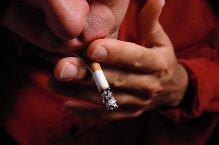
9. Being overweight increases your risks of breast cancer and if you are more than 7 kilos over, your risk is statistically worse than for smoking!! If you are overweight and smoke, one US study showed the combination cut around 13 years (yes, thirteen years) off your life expectancy.

10. Women who consume the highest levels of garlic have less breast cancer. One reason is thought to be due to active factors in garlic killing cancer cells and also preventing the formation of new blood vessels for tumours. Another factor is its benefits with the gut microbiome - garlic attacks yeasts. But much of the latest research focusses on sulforaphanes - these are found in Brussels sprouts and sprouting seeds in general, especially 3 day old broccoli spouting seeds, plus savoy and red cabbage. Sulforaphane consumption is inversely linked to breast cancer risk. There is research on how it increase survival times and helps drugs like Gemcetabine work more effectively. A study from Johns Hopkins showed sulforaphanes were incredibly powerful and could neutralize enzymes involved in cancer spread.

11. Cut common glucose from your diet. Glucose is the essential food of the cancer cell and there are several studies showing people with the highest levels of blood glucose have the shortest survival times. You will find glucose everywhere in fizzy soft-drinks, healthy Ribena, puddings, bought fruit juice, ice cream, burgers, healthy breakfast cereals, milkshakes and cakes and biscuits. Then there’s alcohol, itself a source of sugar. A woman’s chances of breast cancer increase by 6 per cent with every regular extra daily drink. Eat whole carbohydrates like oats, whole organic brown rice and a jacket potato. If you are estrogen positive (Er +ve), eat lots of pulses like red kidney beans, lentils and broad beans and peas.
Go to: 20 links between sugar and cancer
12. And cut salt. In the UK it is mainly hidden from our view, as with sugar, in processed and packaged foods. Even beer contains quite high salt levels. You require no more than one gram a day on average - that’s one sausage or rasher of bacon; three bowls of breakfast cereal; 4 slices of bread, and watch out for the canned foods and packets of crisps. One of the worst culprits is Chinese food. Sodium poisons your cells.
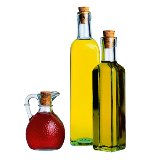
13. And cut the bad oils: Animal fats and those supposedly healthy oils with the pictures of sunflowers that have been refined so much that little trace of a sunflower seed remains. Then there’s trendy coconut oil (92% saturated fat), but the worst are trans-fats. Research shows bad fats in your blood stream help a cancer to spread. Originally thought to be inert they have now been linked to a higher risk of breast and other cancers. Stick to extra virgin olive oil, nuts, seeds, avocado and fish oils. There’s clear research that a Rainbow Diet will increase survival times.
14. And then we come to oestrogen: estrogen is a family of chemical compounds, some are far more dangerous than others. Human estrogen includes estrogen from your ovaries (the female sex hormone) and dangerous estradiol from your fat stores. Then there are dangerous chemicals called xeon-estrogens from herbicides, pesticides and in-home products, toiletry and personal care products.
Go to: 10 ways to cut estrogen naturally
15. Oestrogen has been known to fuel the fire of cancer since the early nineties. Modern research has shown it can act in a number of ways. For example, it can alight on the cellular membrane of healthy cells and send havoc messages inside them; it can stimulate stem cells to remain in their rapidly dividing state; it can actually cause genetic mutation. It is now understood that oestrogen drives a number of different cancers, and as much as 70 per cent of all breast cancers.
16. Not surprisingly then, taking the contraceptive pill increases the risk of breast cancer by about 26 per cent. Even the new safer pill has been found to be just as dangerous. There are even fears over IVF treatment. But the real health terrorist has been the use of HRT. Described by the German Health minister a decade ago as the new thalidomide, CANCERactive has repeatedly told you the negative research. In 2017 finally Cancer Research UK admitted HRT trebled breast cancer risk.
17. Women with the highest level of plant oestrogens, or phytoestrogens, in their blood streams have less breast cancer risk. Typically these women are in South East Asia where their consumption of fruit and vegetables can give them blood phytoestrogen levels 1000 times greater than their New York cousins. Phytoestrogens have about 50 times less strength than oestrone the weakest of the human oestrogens. Some ignorant commentators suggest phytoestrogens are dangerous frankly, this is daft and exposes a poor knowledge of science, since phytoestrogens can block the receptor sites oestradiol would like to attack! Typically phytoestrogens are plentiful in vegetables and fruits, greens and pulses, like chick peas, beans, soya beans. Over 30 per cent of our protein came from pulses in 1900, now it is less than 2 per cent. We no longer eat the foods that protect or correct us.
Go to: The Rainbow Diet and how it can help you beat cancer
18. Also emerging as another possible risk factor for breast is the use of synthetic thyroxin. Historically, women with lowered thyroid performance had less risk of breast cancer. However, some women are put on synthetic thyroxine to compensate for deficiencies. The debate is now starting in the USA. Inadequate testing of the reasons for lowered thyroid hormone has been cited - low iodine levels, for example. Women are supposedly given a level of thyroxine commensurate with their weight, and should even alter their dosage with weather conditions. Unfortunately, where women have a standard dose, and eat an iodine-rich meal (shell fish) they may suddenly have excesses of thyroxine. US Research has now indicated a possible increased risk of breast cancer, with excess thyroxine. Thyroxine uses similar chemical pathways to oestrogen in the body.
19. IARC, the International Cancer Research Agency in Lyon, has concluded that irregular sleeping patterns and lack of sleep is carcinogenic, especially for women. The agency cites a number of research studies all of which have been covered in Cancer Watch. IARC warns women such as air hostesses, nurses, night shift workers and even those who stay up late 3 times per week! The mechanism of risk lies in the lowered production of the hormone melatonin. This is produced by the pineal gland about 90 minutes after falling asleep in a darkened room free of artificial light. Melatonin is a powerful antioxidant and is very anti-inflammatory.
Go to: Melatonin supplementation fights cancer
20. The World Health Organisation has now declared EMFs as possible carcinogens. They act in the same way, lowering blood melatonin levels. Research showed they even interfered with the performance of Tamoxifen. The growing threat of Electrosmog, including the ubiquitous use of mobile telephony and the largely un-researched WiFi are becoming a genuine cause for concern. Research shows having a TV on standby, sleeping on an electric blanket, and between two bed side electric sockets can have risks too. Geopathic stress can be just as bad and both EMFs and geopathic stress damage the good bacteria in your gut.
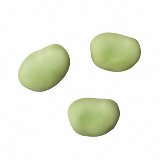
21. Diet is crucially important in the fight against breast cancer. The World Cancer Research fund conducted research showing that the colorful Mediterranean diet ’slashed the risk’ of breast cancer. Much of this is explained by the new Science of Epigenetics, showing that there are 65 or so bioactive natual compounds that can correct cancer cells. These include the core vitamin D, fish oils, curcumin, melatonin, and show that there’re even compounds that can attack TNBC and Her2 breast cancers. Start here:
Go to: Bioactive natural compounds fight breast cancer
22. One of the most potent discoveries in natural compounds for oestrogen-driven cancers is Indole 3 Carbinol, (I3C), typically found in broccoli, cabbage, Brussels sprouts, kale and pok choi. I3C has the ability to actually denature aggressive oestradiol turning it into its weaker sisters, whilst denaturing the by-products too. Research has shown that it can reverse oestrogen-driven cancers, block oestrogen receptor sites and it can restore a damaged p53 gene. It can also reduce the effects of oestrogen mimics and has been dubbed by UCLA to be the safer, natural Tamoxifen. I3C breaks down in the body very quickly to DIM. You could eat one good helping of these vegetables each day, and/or supplement with the natural, but not synthetic, compound.

23. Other beneficial natural compounds from foods include carotenoids, where research has shown they can reduce the risk of developing breast cancer and can help prevent it returning. In two 2009 studies groups eating the largest levels of carotenoids, the colourful pigments in peppers, apricots and so on, halved their risk of breast cancer. Medicinal mushrooms, particularly reishi and a complex, PSK, can reduce breast tumours in research, while flaxseed is anti-estrogenic, helps oxygenate the body and is loved by your gut bacteria.

24. Another way of reducing your oestrogen levels in your body is through having a healthy gut. Unfortunately most orthodox cancer treatments leave your beneficial bacteria in disarray. Beneficial bacteria have been the subject of over 100 clinical trials plus the Human Microbiome Project in the USA and they are now known to direct as much as 85 per cent of your immune system, your natural defence against cancer. Importantly, they also produce cancer-beating vitamins like B-12, folic acid, biotin and vitamin K. Another finding is that they can also break down, bind to and remove from the body oestrogenic and nitrosamine products, chemicals and heavy metals. Recent research showed that they could even produce a cancer-killing chemical (sodium butyrate) from whole foods. Eat whole foods and make sure you take a multi-strained probiotic daily, especially if you have taken antibiotics and drugs or anaesthetic.
25. Not surprisingly, breast cancer has been linked to a loss of good bacteria in the gut, and to the emergence of pathogens or bad bacteria. For example, taking antibiotics - more than 20 doses - doubles your risk of breast cancer. Yeasts are a side-effect and can poison cells, and colonise areas where they reduce oxygen. E coli has been found in one study in high levels in breast cancer tissue. Links have even been shown to bad bacteria in the mouth!
Go to: All cancer begins in the gut
26. Take light to moderate daily exercise. Diet, exercise (and to a lesser extent weight control) are the most important complementary therapies linked to a greater survival. All the 60s stereotypes of going for the burn and lycra have gone. All the latest research says that those people who do 45 -60 minutes of exercise daily get less cancer, and those with breast cancer survive longer. Exercise needs to be light to moderate, where you get out of breath - it can be a brisk walk, a swim, yoga, Tai Chi or whatever you fancy. But do it every day.

27. Be clear of the issues and risks of the screening mammogram, particularly for those women in the high risk, genetic fault group. If you need to be screened regularly, Thermal Imaging may be a better option. Also beware over-diagnosis and mis-diagnosis. The European Breast Cancer Conference heard that, at best, mammograms were inaccurate in two out of three cases. We wrote our first article 13 years or more ago!!
Go to: Screening mammograms can do more harm than good
28. If you are going to have a breast cancer operation and you are pre-menopausal, you might like to know of two studies from Guys Hospital. They found that women who had their operations in the second half of their monthly cycle (when progesterone is the dominant hormone) had twice the long term survival rates of the group having the operation in the first two weeks of their cycle (when oestrogen dominates). There is a school of thought that believes natural (but not synthetic) progesterone is very protective.
29. And then there is stress. Although eminent charities and cancer bodies say there is no link between stress and cancer, at CANCERactive we know differently. For example, depression is known to be linked to lowered blood oxygen levels and in turn to more cancer, and stress increases blood cortisol levels which in turn increase localised cellular hormones called ecosanoids known to cause inflammation and precipitate cancer. Moreover, when you develop cancer, your cortisol levels go up. It helps cancer spread! Furthermore, stress changes the acidity levels in the gut, encourage bad bacteria to develop. And we know that gut bacteria control your physical biochemistry and your mental biochemistry. UCLA researchers believe this is the most neglected area of cancer treatment. They say ’People who actively manage their stress survive significantly longer - the quote counseling, a colorful Mediterranean Diet, fish oils, yoga and Meditation as being very useful at reducing stress and stress hormones when you have cancer.
30. Vitamin D, lowered bad fat levels in the liver and blood stream, a complete gut rebuild clearing yeasts, pathogens and even parasites from the body, plus a targeted plan to reduce inflammation in the body via foods, supplements and stress management techniques. This is where you start your anti-breast cancer program. Remember - Diet, exercise and weight control have been proven to increase survival times!
You should aim to build the ’New You’ - stronger, healthier, better nourished; more able to fight this cancer.
If you want help to build a plan tailored to you and your cancer ...
Go to: Personal Prescriptions with Chris Woollams
These pages are kindly sponsored by the Pink Ribbon Foundation.
www.pinkribbonfoundation.org.uk
